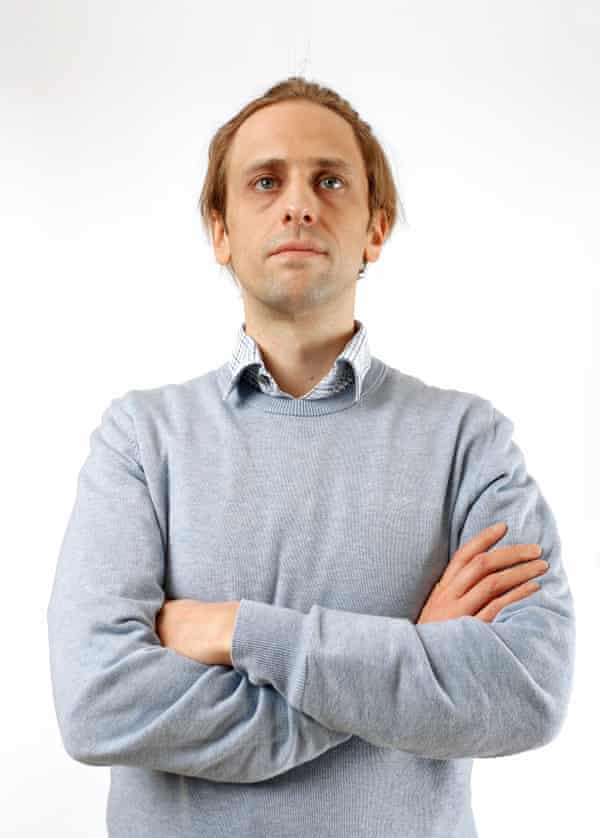In late November last year, the people of Swale in Kent were being lambasted for disobedience. They were being Covid-shamed. The district, home to a large number of apple orchards, as well as the historic towns of Faversham and Sittingbourne, had the highest infection rates in the country. Close behind was nearby Thanet, the two areas totalling a little less than 500 sq km. The rules on wearing masks and social distancing were being “wilfully disregarded”, said Swale council leader Roger Truelove at an emergency meeting. Afterwards he told reporters: “We do get reports of crowding in supermarkets, and so we will be writing to supermarkets.” The council planned to “supercharge the messaging” that people should follow the rules. But they were not to know – how could they? – that the coronavirus had played a particularly nasty trick on their coastal borough.
At least two months before anybody spotted that the UK had a problem, a new variant of the virus had emerged without any warning. The hunt for what would later be dubbed the Kent variant took over the lives of some of the UK’s leading scientists for many urgent weeks, leading to the cancellation of Christmas and the UK’s third lockdown. The variant spread so fast, it now accounts for most of the Covid cases in the UK.
But in late November, there was no clue as to what was behind the surge. Newspapers and TV showed images of people Christmas shopping in groups without masks all over England; Kent’s high streets looked no different. The country had been in lockdown for more than three weeks, and in most places cases were dropping. But in a few Kent boroughs they were still going up.
The people who monitor the national pandemic at Public Health England (PHE) were puzzled. When outbreaks occur, regional and local public health teams investigate and take whatever action is needed. Mobile testing units are moved in. Sometimes it is workplaces that are hit, from food markets such as that in Wuhan, to chicken-packing factories or textile workshops in the UK. Sometimes the surge occurs in low-income communities, living in overcrowded housing where social distancing is not easy. Swale and Thanet had their share of all these problems, but none explained why new cases continued to rise.

PHE sent in its flying squad. Dr Christina Atchison, consultant epidemiologist, heads the rapid investigation unit, supporting overwhelmed regional teams. “Sometimes when you’re so bogged down in the detail, you can’t see the wood for the trees,” Atchison says. “You need a fresh pair of eyes.”
She talked to Kent’s regional director of public health and deputy director of health protection. She knew what they were up against; she used to work in this area herself. These are the people who evaluate and warn of health hazards, from lead in the water to the link between obesity and too many chip shops. “They had lots of hypotheses,” she recalls. One was that Kent commuters were bringing the infection back from London, though case numbers in the capital were not rising overall. Were there workplaces that were not Covid-safe? There was talk of parents not keeping their distance during school drop-offs. The local authority stepped up its warnings, but still the numbers rose.
What was special about Swale and Thanet? Both are on the east coast, either side of Canterbury. Thanet is famous for its beaches, for Margate, for being the home of Tracey Emin, and for the port of Ramsgate, where cross-Channel ferries once ran and Van Gogh lived for a while. Swale is a mainly rural borough, home to orchards and hop gardens. Fewer than 150,000 people live in each area – but in common with other seaside resorts, there are high numbers of retirees and, as a result, large numbers of residential care homes. There has also been an influx of migrant labour working in agriculture, mainly from eastern Europe.
But Atchison couldn’t find an obvious reason for the rising infection rate. “The health protection teams were doing everything right and it wasn’t going in the right direction. So I said, ‘I think it might be worth looking at the genomics.’”
Genomic sequencing and surveillance has transformed our understanding of the spread of disease. Epidemics of the past have had to be understood pretty much only by looking back: who got ill, and when, provided clues; whether someone was infected by their family, or in hospital, or at some sort of super-spreader event, such as a packed religious ceremony; whether the virus had hitched a ride on the 18.10 from Victoria to Sittingbourne. All of that still matters, but there are now other tools that allow us to track a virus’s progress in near real time: we can see its changes, know its strengths and weaknesses. And we do that by looking at its genetic fingerprint.
Way before Covid-19 struck, the UK was world-beating at this. The British scientist Francis Crick and his US colleague James Watson, working at Cambridge University, discovered the double helix structure of DNA in 1953, and Fred Sanger worked out how to sequence it soon after. The human genome – the body’s instruction manual, replicated in almost every cell – was decoded in 2003 by an international collaboration. In 2012, the UK launched the 100,000 Genomes Project, to sequence data from NHS patients, providing clues as to how to treat cancers and rare diseases. The goal was met in 2018.
So when the coronavirus first reached the UK, world-leading genomic scientists were ready to play their part. On 4 March 2020, they began a major collaborative effort to sequence samples from people who had fallen ill. The Covid-19 Genomics UK (Cog-UK) consortium included the four public health agencies, the Wellcome Sanger Institute and more than a dozen universities.
In a blog last December, head of Cog-UK Sharon Peacock recalled the intensity of those early days: “The urgency was underscored by a quickening drumbeat provided by recorded UK cases. Many of us were receiving as many as 250 emails a day, together with a meetings schedule that spanned from dawn to dusk.” Doubters said it was a waste of time, because coronaviruses do not mutate as fast as flu or HIV. “We took the view that waiting until the worst happens, only to realise that one is totally unprepared, is not where we collectively wanted to find ourselves.” Cog-UK was rapidly up and running, with the goal of sequencing as many genomes of Sars-CoV-2, the virus that causes Covid-19, as possible, from a random sample of Covid tests carried out in hospitals and the community. By late December, the UK was responsible for about half of all the world’s genome sequencing of the coronavirus.
All viruses evolve and change over time; a virus with one or two mutations is called a variant. Genome sequencing aims to track those changes, which most of the time are insignificant. Changes to the genome of Sars-Cov-2 were seen within months of its first sequencing in January last year. But unless you sequence every sample collected for a Covid test, you may miss the beginnings of an important change – one that could enable the virus to cause more deaths. Last summer, the Cog-UK labs managed to sequence around half of all UK samples. But when cases are high, as they were last spring and again in November, the proportion dropped. The aim now is to sequence 10,000 every week, and the scientists would like to do even more.
When Atchison couldn’t find a reason for the Kent surge, she went to Meera Chand. Chand is an incident director at PHE, and a microbiologist and infectious diseases consultant. Since January last year, she has been on a rota with four or five others – half a week on, half off – ready to coordinate whatever PHE response is needed. She also runs a unit called the Genomics Cell, which brings together genome scientists from around the UK, as well as PHE experts, to monitor developments. She agreed with Atchison that they should take a closer look at Kent.
“It was quite an unusual-looking situation,” Chand says, “and we saw that about half the genomes available for Kent belonged to this one huge cluster. They all looked really similar.”

A “mind-boggling” 600,000 genomic sequences have been collected in the UK in the pandemic so far, says Nick Loman, professor of microbial genomics and bioinformatics at the University of Birmingham, where the data is stored.
When scientists are looking at changes in a virus, they map it on to a phylogenetic tree – like a family tree, depicting the different paths the virus has taken as it mutates. “Over time, the virus diverges and goes off in different directions,” Loman says. Most of these changes have little effect. The cluster that became the Kent variant, B117, “were at the end of a long branch”, Chand says. In other words, there had been lots of mutations since the last time they had looked at that part of the tree. Not one or two, as they usually saw, but 23. Eight were on the spike protein, which enables the virus to attach to human cells, which was particularly alarming as nearly all the vaccines target the spike.
Every Tuesday since last summer, Chand has met with a small group of genomics scientists from around the country by video link, to talk over anything unusual they have picked up. The first outbreak they looked at was in Leicester, in June. There, it wasn’t genomics that solved the puzzle; teams on the ground found the outbreak was centred in the east of the city, in streets of densely packed houses where generations lived together.
But on Tuesday 8 December, they found themselves looking at pieces of a puzzle that in a few weeks would ruin everybody’s Christmas. Chand told the group about the big cluster of weird-looking genomes they had seen in Kent. Andrew Rambaut, an evolutionary biologist at Edinburgh University and a member of the Tuesday group, had also noticed it. Just the day before, he had been looking for a mutation in the database held on the servers at Birmingham and Cardiff Universities. He had heard about mutation N501Y, later nicknamed Nelly, from a closed meeting of the World Health Organization; this was a feature of a new and concerning variant in South Africa, although that would not be public knowledge for some weeks. Rambaut looked to see if Nelly had turned up in the UK – and found it in the Kent cluster.

It was an important moment, says Loman, also a member of the Tuesday group. “That meeting is legendary now, in our minds at least, because it was the start of an incredibly hectic week of analysis and report writing. We had found something that turned out to be very important.” Looking at the phylogenetic tree, Loman says, they would expect to see any Kent variants dotted across different branches, meaning they were mostly unrelated. “Instead, we found more than half the cases were in one cluster, which was like: ‘Woah. Why has that happened? surely not all the people of Kent have gone to an illegal rave?’” The Tuesday group members agreed the branch looked “really wrong”, Chand says, “like something we hadn’t seen before.”
On Friday, the new and emerging respiratory virus threats advisory group (Nervtag) met. Chaired by global infectious diseases expert Professor Peter Horby of Oxford University, the group is a key committee within Sage, the government’s scientific advisory group for emergencies. The Tuesday group presented a paper in which Erik Volz from Imperial College London analysed the variant’s growth rate. It wasn’t the number of cases that was worrying, he said: it was the rate at which the numbers were growing.
“The combination of having something genetically unusual and growing quickly was enough to raise alarm,” Volz says now. “And when we estimated the prevalence of the variant, it was exactly the places that had the highest incidence.” In other words, the areas where the new variant was concentrated were also the places with the highest rates of Covid.
Professor Neil Ferguson, who leads the MRC Centre for Global Infectious Disease Analysis, and is a member of Nervtag, read the paper, listened to what the group had to say and reached for his phone. “I texted Patrick Vallance [the government’s chief scientific adviser], saying it was something to watch,” he tells me. Volz and Rambaut had estimated the variant could potentially be 50-70% more transmissible. “What concerned me was that any strain that is that much more transmissible would pose major problems in terms of control.”
An intensive investigation began. With luck, a third piece of the jigsaw was about to be fitted into place. For a few months, the Wellcome Sanger Institute near Cambridge, part of Cog-UK and the country’s leading genomics research centre, had been carrying out the sequencing from people in the community, while the university labs took hospital samples. Sanger received a random selection of virus samples daily from the Lighthouse labs, the big test centres set up by the government. “We set up a process by which the waste residue of those PCR tests gets shipped to the Sanger in chilled vans,” says Dr Jeffrey Barrett, director of the institute’s Covid-19 Genomics Initiative. “We were taking as many [samples] as we could. The idea was to look for undiscovered super-spreader events, or other changes in how the virus was spreading.”
The Sanger sees up to 5,000 samples a week, and usually there are only slight variations. In November, they spotted what was happening in Kent. “B117 appeared on the scene with 20 mutations compared with its closest relatives. And that was very weird,” Barrett says.

Then came the lucky break. The Lighthouse labs got in touch to say they had also noticed something strange. PCR tests detect parts of three different genes in the coronavirus, showing up “three green lights” – one for each, Barrett says. But the labs were getting increasing numbers of red, green, green tests. In other words, they were positive for two of the genes, but negative on one – the S-gene. They had seen this before, but only in 1% of cases. That percentage had suddenly risen, fast, to 5-10%. “We looked at all the tests that had this S-gene target failure,” Barrett says, “compared them with the analysis we were doing and said, oh gosh, these are all B117.” Volz and others could now work on a mathematical model to see how fast and where the variant was spreading.
The middle two weeks of December were intense, Ferguson remembers . Ministers had to be given the bad news; the evidence had to be incontrovertible. Chand’s Tuesday group spoke every day. “Those two, three weeks were really uphill,” she says. Above all, they needed to establish whether the Kent variant really did spread twice as fast as the original virus. “We knew that we had to be really sure, really quickly – because the impact was so massive.”
On 14 December, Matt Hancock told the House of Commons that there had been an exponential rise in cases of a new variant in Kent, London and parts of Essex and Hertfordshire. Four days later, Nervtag met again to discuss the variant and noted its “exponential growth”. Vallance, chief medical officer Chris Whitty and the prime minister were briefed. On Saturday 19 December, Boris Johnson announced that London, the south-east and east would enter tier 4, with non-essential shops closed. And Christmas, for most, was cancelled.
For the scientists, there would be no holiday at all. “I was intending to take 10 days off over Christmas,” Ferguson says. “I took Christmas Day off. That is true, I think, for everybody who is working on this variant.”
On 4 January, Johnson announced a full national lockdown. “There is no doubt that in fighting the old variant of the virus, our collective efforts were working,” he said. “But we now have a new variant.”
While sequencing helped identify and track the variant’s spread, it couldn’t explain where it had come from. Atchison and her team went looking for patient zero, contacting the 20 first cases they knew about. “We wanted to know, has it been imported? Is it from an animal?” They had been watching for any virus arriving from Denmark’s mink farms, where an outbreak had led to the cull of 17m animals in November. “We were nervous there may be an animal reservoir. And most other countries don’t do genomic surveillance as well as we do.”
The first sequences in the database were from two people who were tested on 20 September in Kent, and 21 September in London. But neither was the first person to have it. “They hadn’t had links to immunocompromised people, hadn’t travelled anywhere unusual or had contact with someone who had,” Atchison says. “They weren’t farmers or vets.”
Tracking back beyond the sequenced cases was impossible with any certainty; virus samples were destroyed after a few days. (The discovery of the Kent variant has changed that; labs are now asked to keep them for a month.) “My best guess was the first patient might have been somewhere in London, because it’s just a big city with lots of people,” Barrett says. It might have been someone who flew in from another country; but as it spread rapidly in the UK before taking hold anywhere else, he thinks this unlikely.

Most scientists now think it emerged in someone who was ill with Covid for a long time, and whose immune system was compromised. Ravi Gupta, professor of clinical microbiology at Cambridge University, saw this when the virus mutated in a Covid patient he was treating in hospital. The man in his 70s had a damaged immune system because of lymphoma and chemotherapy. Two months after contracting Covid, he was given convalescent plasma, full of antibodies from patients who had recovered. But sequencing the virus in him, they found it had changed in a way that appeared to confer resistance to the antibodies. It was not the first case of the Kent variant; but many scientists think it is the most plausible explanation of how it might have emerged.
The B117 variant is now the dominant form of the virus in the UK. Its stealthy, rapid spread over two critical months made it impossible to contain. Other countries closed their borders to the UK in December, but were unable to keep it out; the Kent variant is now a big factor in Europe’s third wave. In every country it has reached, a race is on between the spread of B117 and the rollout of vaccines. Its discovery has confounded the doubters who thought Cog-UK a waste of time and money, and will ensure genomic sequencing becomes central to the way the UK deals with Covid. “It validates an approach I really want us to have for the future,” Chand says, “where genomics is entirely integrated into the rest of the health service. You can perceive it as a specialist research thing, out on a limb – but it needs to be embedded there.”
While they watch for homegrown changes in the virus, the Tuesday group – and many other UK scientists – are also on red alert for variants from abroad, such as B1351 from South Africa and P1 from Brazil. Alarmingly – and in contrast to the Kent variant – the vaccines we have may not work as well against them. Trials of the newer Janssen and Novavax vaccines showed efficacy in South Africa was up to 60% against the variant – substantially lower than against the original virus. A small trial of the AstraZeneca vaccine showed it did not stop people becoming mild to moderately ill, which led the South African government to stop the rollout. Scientists say a key mutation causing this resistance is E484K, which is also in the Brazilian variant.
Ferguson warns that 5-10% of cases in France are now the South African variant. “That is the variant we really do want to keep out of the UK,” he said on BBC Radio 4’s Today programme on 19 March. “The longer we can keep it out… the more time we have to vaccinate the whole adult population and to update vaccines, to be able to cope.”
So far, P1 has been kept in check – in spite of the furore over somebody who tested positive but failed to leave their phone number. (A very public manhunt led to the person coming forward.) Up until 24 March, there were 21 confirmed cases in the country, and 305 of B1531. Under lockdown, these variants can be kept at bay. What will happen now that many are desperate for a foreign holiday? Chand says her team is focusing hard on getting “a really good understanding of what’s happening in other countries, many of whom are starting to do a lot of detailed genomic surveillance”. South Africa already does a lot, which is how the B1351 variant was found. An international influenza database called GISAID was launched in 2008, following an outcry over the failure to share data on deadly bird flu two years earlier. Now it has become the main repository for coronavirus genome sequences as well, with the UK contributing the most.
The arrival of the Kent variant was very bad news for the UK, and for the rest of the world. But even as borders slammed shut, the UK’s pioneering genome scientists were lauded for having found it. If there was ever any doubt about the importance of genome sequencing in a pandemic, it had been laid to rest. When the UK has fewer Covid cases, a bigger proportion can be sequenced – and there is a greater the chance that variants will be detected earlier. As global travel increases, and lockdowns ease, that work will be more important than ever. The Tuesday club will continue to meet, its genomic scientists painstakingly adding to the phylogenetic tree, watching for clusters, analysing growth rates – and hoping to stop the next outbreak in its tracks.
This content first appear on the guardian

This is an awesome motivating article.I am practically satisfied with your great work.You put truly extremely supportive data. Keep it up. Continue blogging. Hoping to perusing your next post
We are tied directly into the sate’s renewal database which allows us to process your request almost instantly
Wow! Such an amazing and helpful post this is. I really really love it. It’s so good and so awesome. I am just amazed. I hope that you continue to do your work like this in the future also.
I am looking for and I love to post a comment that “The content of your post is awesome” Great work!